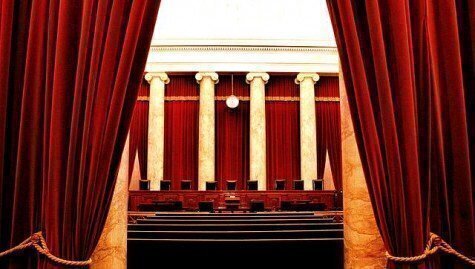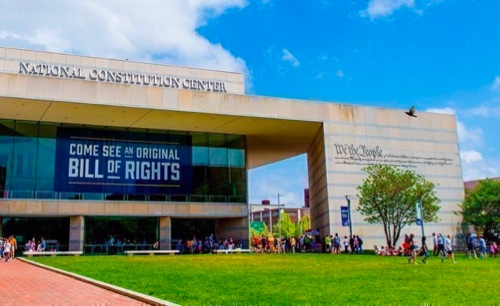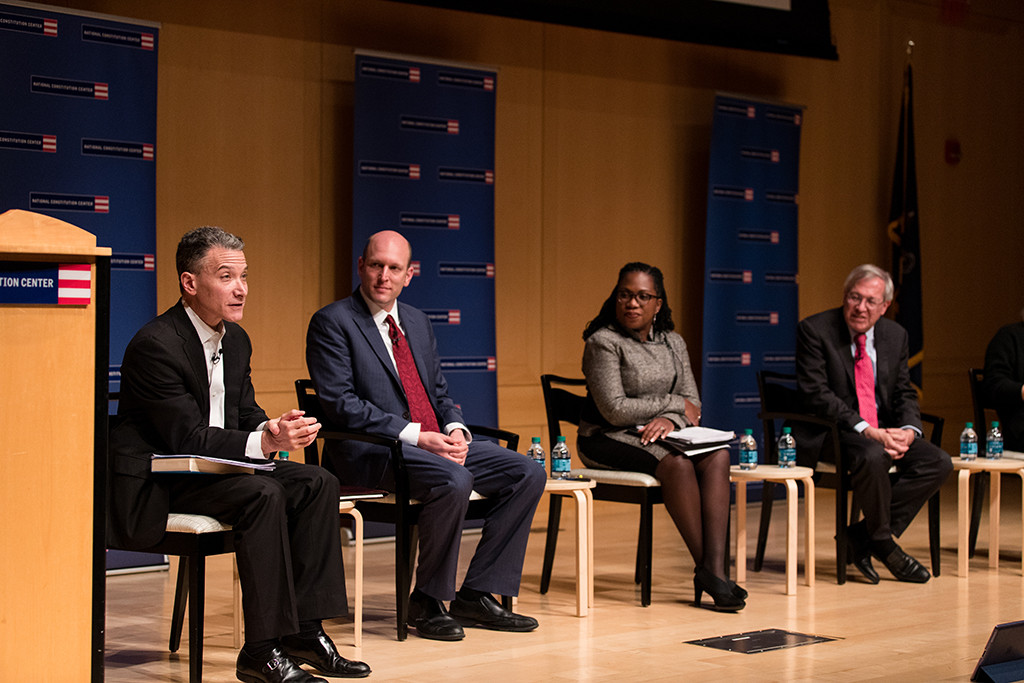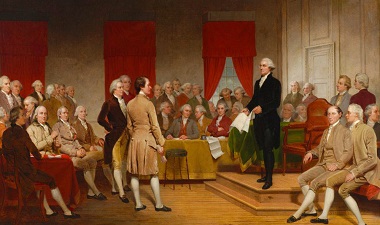On Tuesday night, President Donald Trump said that Neil Gorsuch will be his nominee to the Supreme Court to replace the late Antonin Scalia. What are the next steps in the confirmation process?
 Under Article II, Clause 2, of the Constitution, the nomination process started with the public announcement by Trump. The President then will officially notify the Senate of the nomination in a written statement. This is required under the Constitution’s “Appointments Clause” in Article II, Section 2, Clause 2, which reads that the President “shall nominate, and by and with the Advice and Consent of the Senate, shall appoint … Judges of the supreme Court.”
Under Article II, Clause 2, of the Constitution, the nomination process started with the public announcement by Trump. The President then will officially notify the Senate of the nomination in a written statement. This is required under the Constitution’s “Appointments Clause” in Article II, Section 2, Clause 2, which reads that the President “shall nominate, and by and with the Advice and Consent of the Senate, shall appoint … Judges of the supreme Court.”
Under Senate standing rules going back to 1868, the nomination is sent to the Senate Judiciary Committee, unless the nominee is a current or former Senate member. (In the most-recent incident of a former Senator as the nominee, the matter was referred back to the Judiciary Committee and not directly considered by the full Senate.)
The Senate Judiciary chair, Charles Grassley, will authorize a pre-hearing investigative stage about the nominee, followed by public hearings at the Judiciary Committee and a decision on a recommendation to the full Senate.
The nominee first undergoes the extensive investigation process. The nominee fills out a long questionnaire, and the FBI also conducts an investigation. The American Bar Association will issue a rating for the nominee based on professional qualifications. And traditionally, the nominee will meet with Senators who are part of the approval process.
Next, the nominee appears at a public hearing at the Senate, facing a variety of questions from the Judiciary Committee. According to the Congressional Research Service, in recent years it has taken an average of 39 days from a candidate’s nomination for the first public hearing to occur. On average, hearings last four to five days, but Robert Bork’s hearing was 11 days long.
By a majority vote, the Judiciary Committee can report the nomination favorably, report it unfavorably, or report it without making any recommendation at all. It is also possible for the committee to take no action of any type to send a report to the full Senate.
Once a recommendation vote is taken by the Judiciary Committee, and the nomination is sent to the entire Senate for a floor vote, a simple majority is needed to confirm the nominee. However, 60 votes are needed under cloture rules for the nomination vote to make it to the floor if a filibuster is requested.
When the nomination is reported to the full Senate for consideration, it is placed on its Executive Calendar. The Senate Majority Leader decides how to approach the voting process. The Leader can ask for unanimous consent for the nomination to head directly to the floor for debate, or put in place measures to limit a filibuster by asking for a cloture vote. The nomination is then debated by the full Senate in Executive Session, where a filibuster is possible, if not limited by prior rules. The cloture vote, requiring 60 votes, would end a filibuster after an additional 30 hours of debate.
The Republicans have 52 seats in the current Senate, meaning they would need eight votes from Democrats or Independents to avoid a filibuster blocking the nomination vote. The Republicans also have the dramatic option of eliminating the filibuster for a Court nominee using parliamentary moves like those employed by then-Democratic Senate Majority leader Harry Reid in 2013, to end other Senate filibusters.
In recent years, the average Supreme Court nomination and confirmation process has taken between two and three months. The new Justice, if confirmed, could be available for arguments heard at the Court in late April, missing the late March part of the Court calendar – unless the process is greatly expedited.
In 2010, there was a six-week period between Elena Kagan’s nomination and the start of her in-person Senate testimony, which lasted for two days. Kagan’s approval by the Judiciary Committee came three weeks later, with full Senate approval about two weeks after that.
Scott Bomboy is editor in chief of the National Constitution Center.







